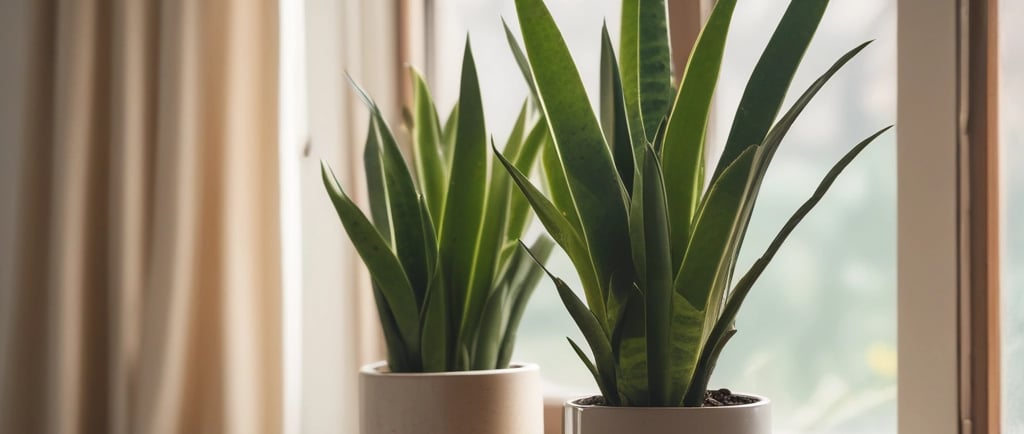How to Care for Snake Plants: The Ultimate Guide to Growing Healthy Sansevieria Indoors
Let's be honest—if you've ever killed a houseplant, you're not alone. But here's the good news: snake plants are basically the superheroes of the plant world. They're tough, forgiving, and they look absolutely stunning while asking for almost nothing in return.
10/11/20252 min read


Let's be honest—if you've ever killed a houseplant, you're not alone. But here's the good news: snake plants are basically the superheroes of the plant world. They're tough, forgiving, and they look absolutely stunning while asking for almost nothing in return.
Why Snake Plants Are Your New Best Friend
Snake plants (or Sansevieria, if you want to get fancy) are the ultimate low-maintenance companions. They can survive weeks of neglect, tolerate low light, and still stand tall and proud. Perfect for busy people, forgetful waterers, or anyone who just wants a gorgeous plant without the drama.
The Golden Rules of Snake Plant Care
Water Less Than You Think
Seriously, the biggest mistake people make is overwatering. These desert natives actually prefer to be a little thirsty. Water only when the soil is completely dry—usually every 2-3 weeks in summer and even less in winter. When in doubt, wait another week.
Light? They're Flexible
Snake plants are like that friend who's happy anywhere. Bright indirect light? Perfect. Low light corner? No problem. Direct sun? They can handle a bit. Just avoid total darkness, and they'll reward you with steady growth.
Don't Stress About Soil
Use well-draining soil (cactus mix works great), and make sure your pot has drainage holes. That's it. Snake plants aren't picky—they just don't want wet feet.
Temperature and Humidity
Normal room temperature is fine. These plants aren't fussy about humidity either, which makes them perfect for any home environment.
Watch for Happy Plant Signs
Healthy snake plants have firm, upright leaves with vibrant color. New shoots popping up from the soil? That's your plant saying "thanks for the great care!" Yellow or mushy leaves usually mean too much water, while wrinkled leaves suggest it's time for a drink.
Ready to Become a Plant Parent Pro?
Snake plants are just the beginning of your indoor garden journey. Whether you're looking for more care tips, troubleshooting advice, or want to expand your plant collection, head over to homeplantwellness.com for expert guides, plant care schedules, and a community of fellow plant lovers who are always ready to help.
Your snake plant is waiting to thrive—and with these simple tips, you're already set up for success!
Stay updated with our plant tips.
Contact
© 2025. All rights reserved.